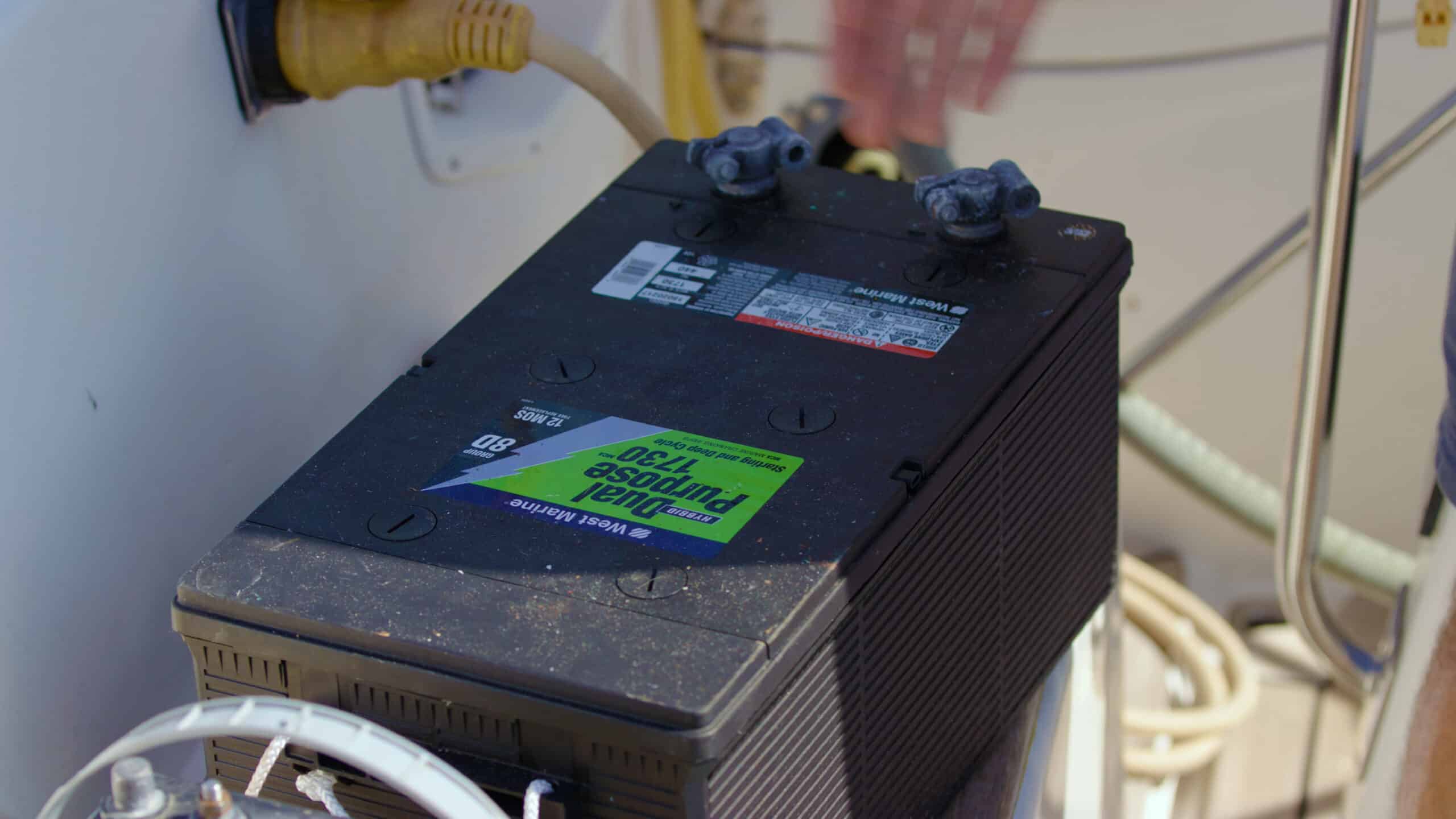
Once you’ve finished installing your marine electrical system and it’s up and running, you will want to ensure it is maintained properly. Although lithium power systems require minimal maintenance, simply checking up on your components and ensuring connections are tight and clean can make a world of difference. This will protect the integrity of your system, protect your batteries from damage, and keep you safe.
With a lithium-powered marine electrical system, your bank of Battle Born Batteries will make up the “house bank.” This is powering all the electronics and equipment within your boat. Since a high amount of current is constantly running in and out of your batteries, it is essential that your connections to your battery terminals remain tight and clean. Any dirt or corrosion could lead the terminals to get hot, which could melt the insulation of the wires attached to them and even damage the batteries.
Regularly, we recommend using two wrenches to check the connections on your battery terminals. It is best to use an insulated wrench with a rubber handle to prevent shorting across your terminals. In a pinch, if you don’t have an insulated wrench available, you can put heavy tape around the handle of your wrench to keep yourself and your batteries protected. Then, with both wrenches, check to make sure the connection on your battery terminal is as tight as possible.
If you notice dirt or corrosion on your terminals, simply take the connection apart and clean it with a wire brush or sandpaper. Clean both sides well until any visible dirt or corrosion is gone. Then, add a small amount of dielectric grease to either side of the terminal and re-secure the connection.
Over the course of time, your marine electrical system will continue to evolve and change as you modify your system and upgrade or reinstall various components. As you make changes to your system, it is essential that you are constantly thinking about your fuses. When parts of your system change, you may need to change a fuse to ensure it can handle the current. After completing any alteration to your system, simply do a quick audit of the fuses. Just to ensure they are all still able to function as intended.
In addition to the batteries in your house bank, your boat also has a starting battery for the main engine. This is typically a lead-acid water-filled battery that requires regular maintenance beyond simply checking the terminal connections. Regularly, about once a month or so, you need to add distilled water to your battery. This will keep it filled properly, so you don’t risk damaging it.

Check out the full Marine 101 series on our YouTube channel or through the Academy page on our website. If you have further questions or need help designing the perfect marine power system, our technical sales team would love to help! You can reach them by calling (855) 292-2831 or emailing [email protected].
Shop Best Sellers
Ask a technical specialist now at 855.292.2831
Stay in the Know
Copyright © 2024 Dragonfly Energy. All rights reserved. Dragonfly Energy collects personal information for its internal use. We do not share customer information with any third parties.